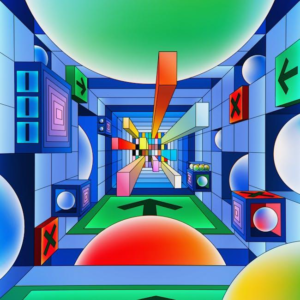How Gamification Principles Influence Serious Game Design
Serious games have emerged as a powerful tool to educate, train, and solve complex problems across various fields such as education, healthcare, and corporate training. At the heart of creating truly effective serious games lies the integration of gamification principles. These principles optimize engagement and motivation, carefully blending entertainment with educational or professional objectives. In this article, we explore how gamification influences serious game design, delve into key principles, and offer practical insights to enhance your gamified serious game projects.
Understanding Gamification and Serious Games
Gamification refers to the use of game design elements and mechanics in non-game contexts to drive user engagement and behavior. For example, adding point systems, badges, or challenges to a learning module motivates learners to remain focused and committed.
Serious games, on the other hand, are full-fledged games designed primarily for purposes beyond pure entertainment. These games aim to educate, build skills, or influence behavior by incorporating structured gameplay that aligns with their core goals.
When gamification principles are thoughtfully integrated into serious game design, the result is a compelling experience that not only instructs but also captivates players, fostering deeper learning and improved retention.
Core Gamification Principles Impacting Serious Game Design
Incorporating gamification into serious games goes beyond sprinkling points and badges. It requires a nuanced understanding of game dynamics that influence player psychology. Below are the key principles shaping effective serious game design:
1. Meaningful Goals and Progression
Setting clear, achievable goals helps players understand what they need to accomplish. Serious games utilize progression systems – from levels unlocked to milestones achieved – to give users a sense of advancement and purpose.
2. Immediate Feedback
One of the strongest engagement drivers is timely feedback. Players should quickly see the results of their actions through scores, visual cues, or narrative consequences, enabling them to adjust strategies and stay motivated.
3. Challenge and Skill Balance (Flow)
Effective games balance difficulty with player skill to maintain flow – the state where players are fully immersed and neither bored nor overwhelmed. Serious games carefully scale challenges to enhance learner focus and satisfaction.
4. Autonomy and Choice
Offering meaningful choices empowers players, making them active participants rather than passive recipients. Incorporating branching scenarios or multiple ways to solve problems enriches the serious game experience.
5. Social Interaction and Competition
Many serious games integrate multiplayer elements, leaderboards, or collaborative tasks to leverage social dynamics that can amplify motivation and competition.
6. Rewards and Recognition
While intrinsic motivation is ideal, external rewards like badges, points, or virtual currencies act as powerful reinforcement, driving prolonged engagement.
Benefits of Applying Gamification in Serious Game Design
Implementing gamification principles in serious games delivers numerous benefits both for users and developers:
- Enhanced Engagement: Gamified elements promote sustained participation and reduce drop-off rates.
- Improved Learning Outcomes: Interactive challenges and immediate feedback enhance knowledge retention and skills acquisition.
- Increased Motivation: Rewards and social competition boost intrinsic and extrinsic motivation.
- Customizable Experiences: Player choice leads to more personalized and adaptable learning paths.
- Measurable Performance: Gamification facilitates the tracking of user progress and analytics for refinement.
Practical Tips for Integrating Gamification into Serious Game Design
Designers can take several practical steps to embed gamification effectively while maintaining the serious nature of their games:
- Start with User-Centered Design: Understand your target audience’s preferences, goals, and pain points.
- Define Clear Learning Objectives: Ensure all gamified elements align with your educational or behavioral goals.
- Use Diverse Game Mechanics: Include mechanics like quests, time challenges, puzzles, and badges to cater to different learning styles.
- Balance Fun and Function: Avoid overwhelming players with game elements that overshadow content.
- Test and Iterate: Collect feedback to refine game difficulty, rewards, and narrative coherence.
Case Study: Gamification in a Corporate Serious Game
Consider a real-world example where a multinational company developed a serious game to train employees on cybersecurity:
| Gamification Element | Implementation | Impact |
|---|---|---|
| Points & Leaderboards | Employees earned points for identifying phishing emails; leaderboards fostered healthy competition. | 15% increase in training completion rates within the first month. |
| Immediate Feedback | Real-time alerts explained why an email was flagged malicious or safe. | Better knowledge retention and fewer cybersecurity incidents reported post-training. |
| Branching Scenarios | Multiple decision paths based on users’ actions simulated various threat responses. | Improved critical thinking and decision-making skills. |
Conclusion: Gamification is the Backbone of Successful Serious Game Design
Incorporating gamification principles into serious game design is no longer optional but essential to create compelling, effective learning and training experiences. By leveraging meaningful goals, balanced challenges, immediate feedback, autonomy, social interaction, and rewards, designers can transform serious content into captivating gameplay that drives user engagement and results.
Whether you’re developing educational tools, corporate training programs, or health simulations, understanding and applying gamification principles will significantly enhance the success and impact of your serious game projects. Embrace this powerful synergy and watch your serious games become not only instructive but truly transformative.











